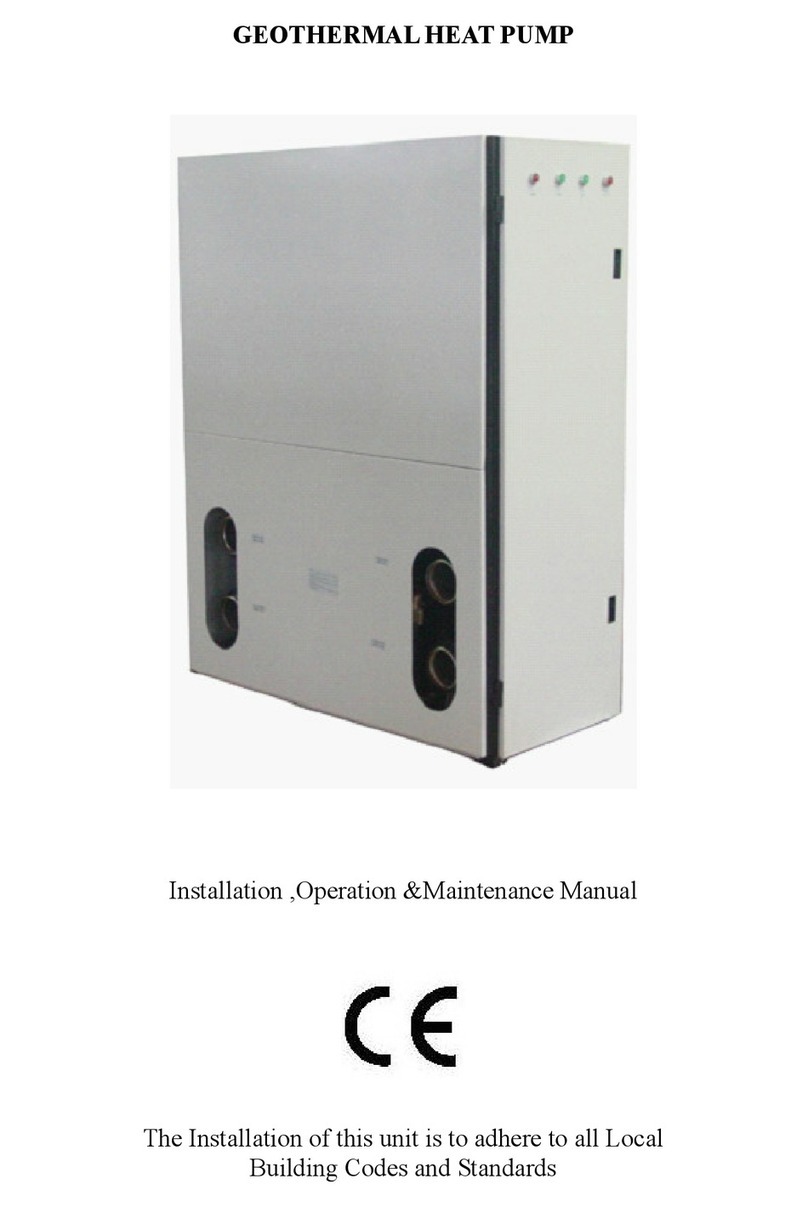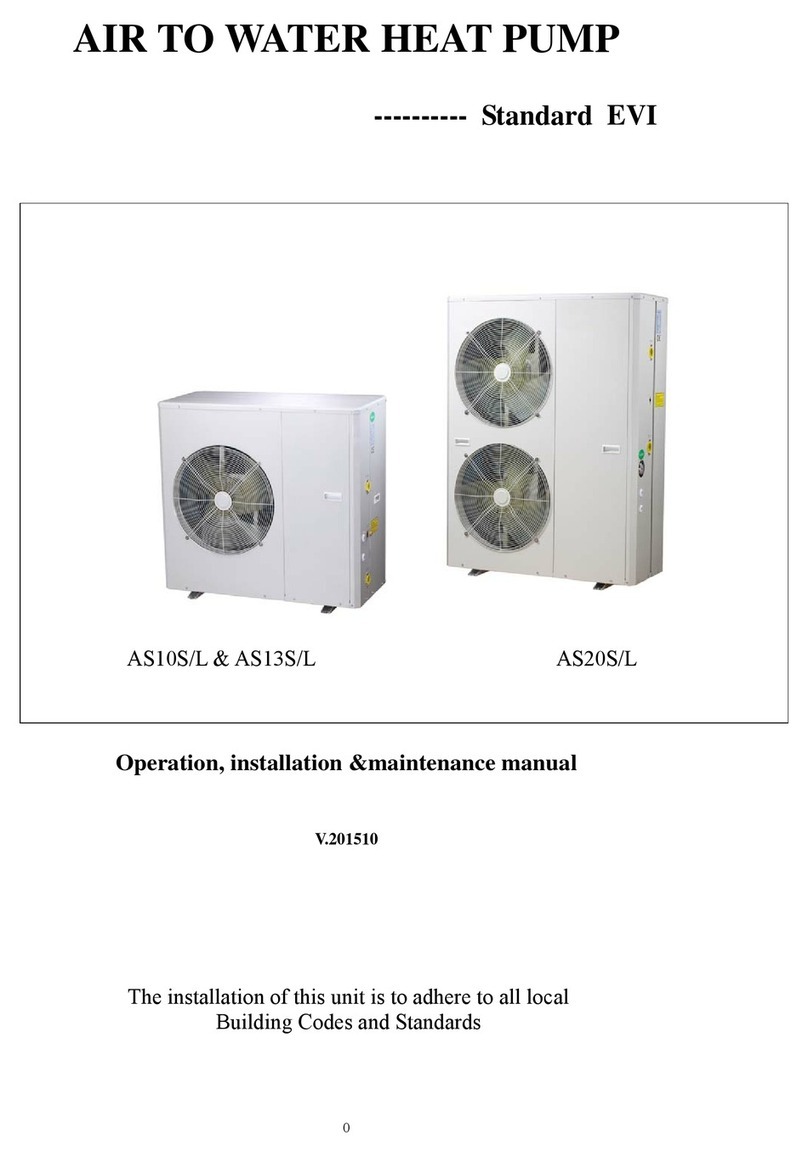Index
Pre-Installation.............................................................................................................2
Installation Location and Positioning ........................................................................4
Buffer Tank...................................................................................................................5
System Overview Vertical Ground Loop System......................................................6
System Overview Horizontal Ground Loop System.................................................7
System Overview Ground Water with Intermediate Heat Exchanger System ......8
System Overview Floor Heating Only........................................................................9
System Overview Heating ,Cooling & Hot Water................................................... 11
System Overview Multiple Units in Series Cascade Connection...........................15
Installation ..................................................................................................................17
Electrical Connection.................................................................................................19
Controller....................................................................................................................31
Commissioning and Adjusting ..................................................................................39
Warning and alarm....................................................................................................42
Trouble shooting.........................................................................................................46
Maintenance ...............................................................................................................47
Dimension ...................................................................................................................48
Components ................................................................................................................50
Pressure drop curve ...................................................................................................56
Temperature and sensor resistance table.................................................................60
Technical specifications .............................................................................................63


























